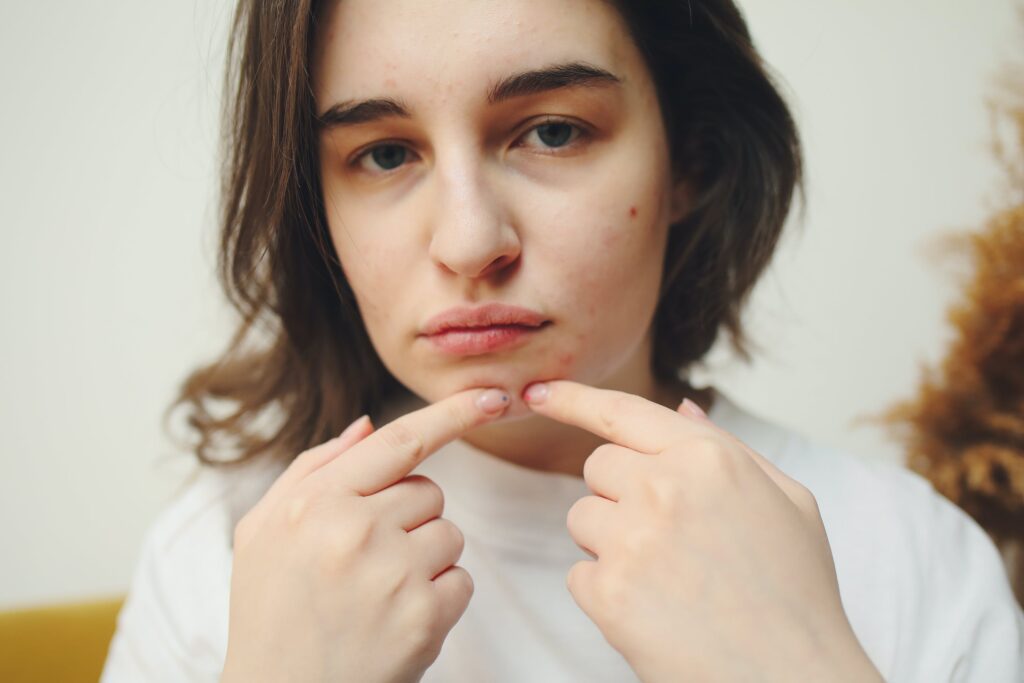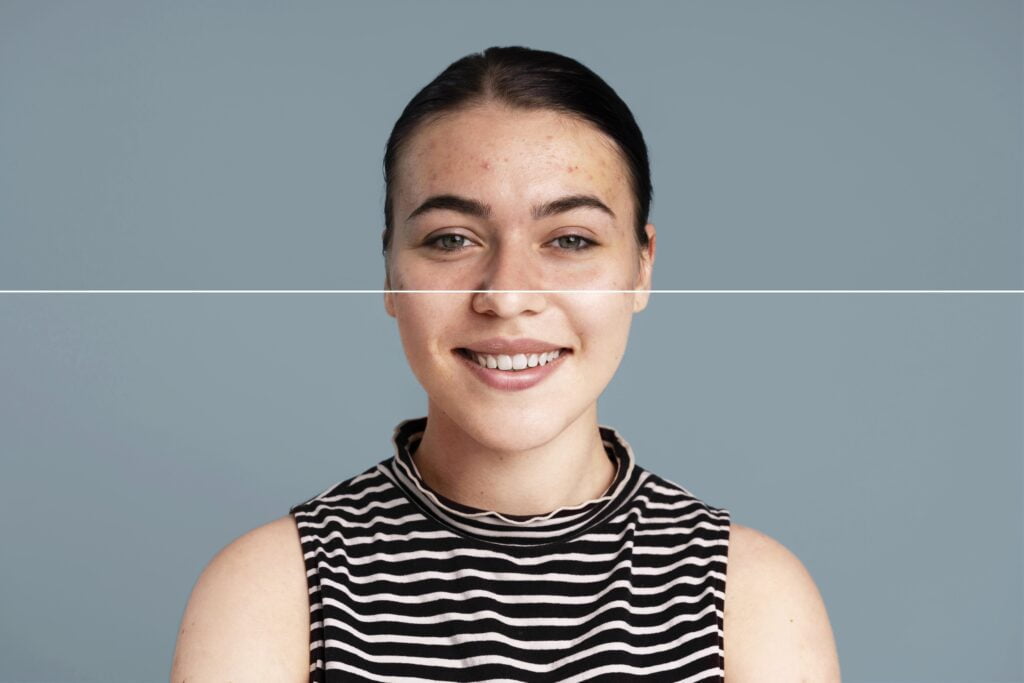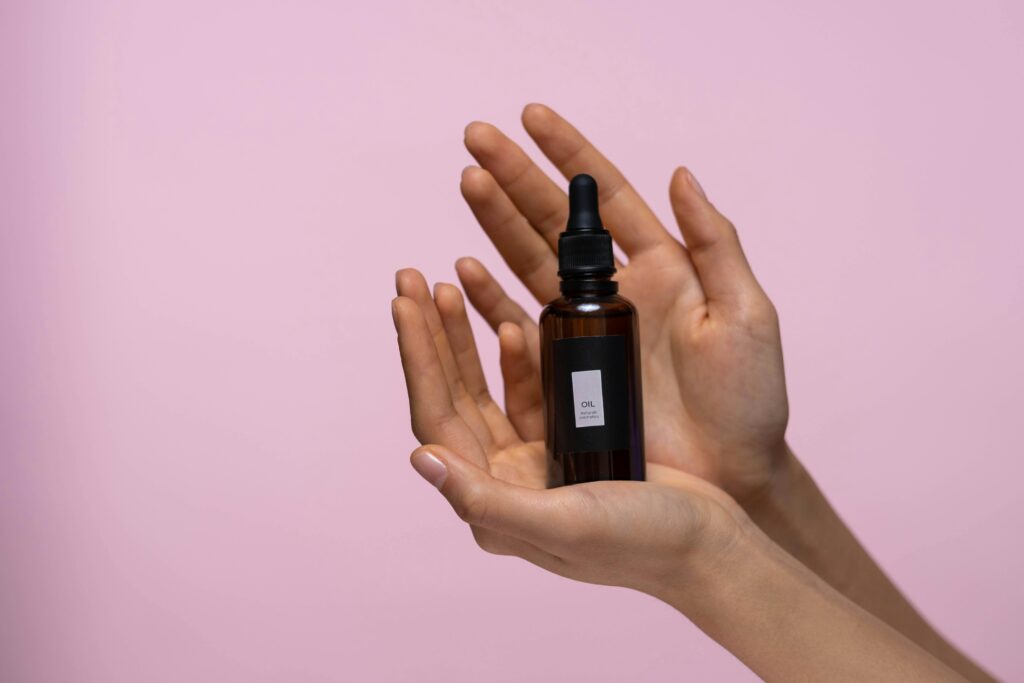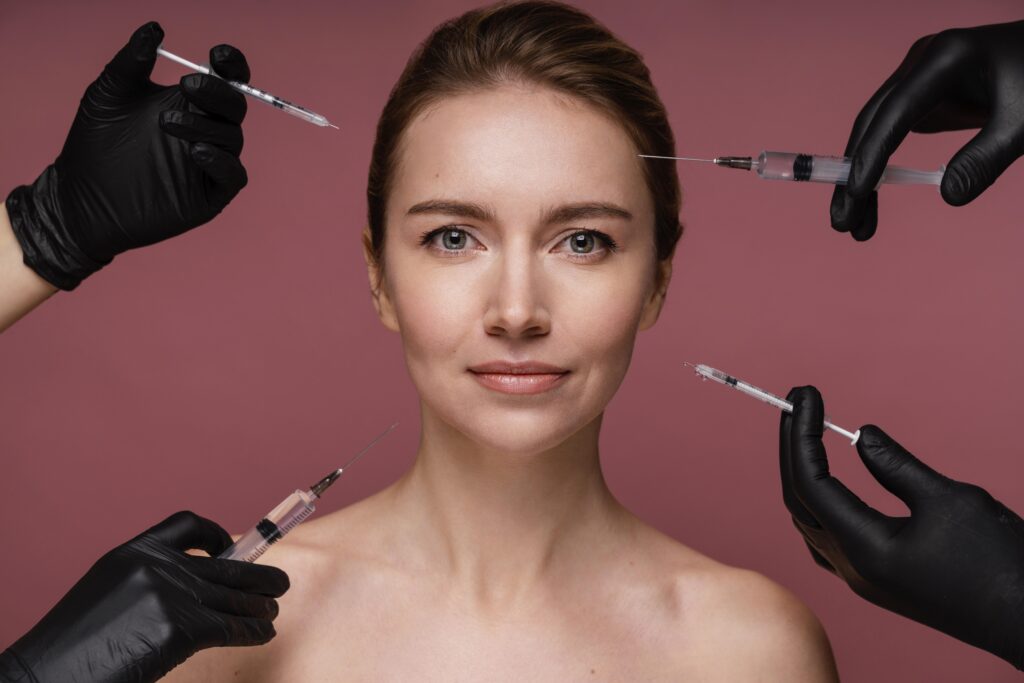Picture this: You wake up, look in the mirror, and find yourself battling stubborn skincare concerns – acne scars and those annoying large pores. It’s a common struggle that many of us face, impacting not just our skin but our confidence as well. In this journey to decode the difference between acne scars and large pores, we’ll embark on a narrative that goes beyond the skin’s surface. Join us as we explore the intricacies of these skincare dilemmas, understand how they form, and discover effective ways to manage them.
Key Takeaways:
- Differentiate between acne scars and large pores for precise skincare.
- Minimize pores through regular, gentle exfoliation.
- Optimize pore appearance with tailored toners and serums.
- Manage enlarged pores considering hormonal changes, smoking, and skincare habits.
- Address acne scars promptly, stemming from severe breakouts.
- Fade scars with retinoids, alpha hydroxy acids, and rejuvenate with microneedling.
- Explore advanced treatments like TCA CROSS and laser skin resurfacing.
- Smooth acne scars and restore skin with subcision and dermal fillers.
- Experience skin restoration with Spectra Laser Carbon Suspension Peel.
- Seek professional guidance and community engagement for healthier skin.
Table of Contents
Getting to the Root: Understanding Skincare Basics

The first step in comprehending acne scars and large pores is getting a grasp on some skincare basics. Our skin, the body’s largest organ, is complex and influenced by numerous internal and external factors. It consists of multiple layers, each with unique functions and structures. The outermost layer, the epidermis, contains pores – small openings that release oils and sweat. When these pores become enlarged, they can become more visible and problematic, leading to what we refer to as ‘large pores’.
The Significance of Differentiating Acne Scars and Large Pores
While acne scars and large pores might seem similar at first glance, understanding the differences between the two is crucial for effective treatment. Acne scars are the result of inflammatory damage to the skin, while large pores are usually the result of excessive oil production and/or decreased skin elasticity. Differentiating these two conditions will help you choose the right skincare products and treatments tailored to your specific needs.
Understanding Large Pores: Beyond the Basics
Factors Contributing to Large Pore Appearance
Several factors contribute to the appearance of large pores. Excess oil production, lack of regular exfoliation, decreased skin elasticity due to aging, and genetic factors all play a role. When your skin produces excess oil, it can make the pore opening appear larger. Similarly, when dead skin cells are not regularly exfoliated, they can clog the pores, contributing to their enlarged appearance.
The Influence of Gender and Age on Pore Size
Gender and age also significantly impact pore size. Men tend to have larger pores than women due to higher sebum production. With age, reduced collagen production and skin elasticity can lead to enlarged pores. Sun damage and decreased skin hydration can further exacerbate these effects.
The Protective Role of Sunscreen in Pore Care
Sunscreen plays a crucial role in minimizing large pores. Overexposure to the sun can damage the collagen and elastin in your skin, leading to sagging and stretching of the pores. Regular use of sunscreen helps protect the skin from this damage, thereby helping to preserve skin elasticity and minimize pore size.
Impact of Gentle Exfoliation
One powerful tool in the fight against enlarged pores is the practice of gentle exfoliation. Discover how exfoliating the skin can help minimize the appearance of large pores by removing dead skin cells, preventing congestion, and promoting a smoother complexion. We’ll explore the different exfoliation techniques and products that can make a noticeable difference in refining the texture of your skin.
Pore Refining Skincare: Toners and Serums
Skincare products play a pivotal role in addressing large pores, and toners and serums specifically formulated for pore refinement can be game-changers. Learn about the active ingredients and formulations that effectively tighten and minimize the appearance of pores. We’ll guide you through the selection process, helping you choose products that suit your skin’s unique needs and concerns.
Demystifying Large Pores: Exploring Factors Beyond Gender, Age, and Skin Type
Common Causes Leading to Enlarged Pores
In addition to gender, age, and skin type, several other factors can lead to enlarged pores. These include hormonal fluctuations, smoking, improper skincare routines, and certain dietary habits. Hormonal changes, especially during puberty, pregnancy, and menopause, can increase sebum production, leading to enlarged pores. Smoking reduces skin elasticity, while incorrect skincare practices and high-fat diets can contribute to poor skin health and enlarged pores.
The Impact of Hormonal Changes on Pore Size
Hormones play an essential role in determining pore size. Changes in hormone levels, especially androgens, can lead to increased sebum production, leading to enlarged pores. This is why people often notice changes in their skin and pore size during puberty, pregnancy, and menopause — times when hormonal fluctuations are common.
Customizing Skincare Routines for Diverse Skin Types
Since different skin types have unique characteristics and needs, it’s important to customize your skincare routine accordingly. For example, oily skin types that are more prone to large pores can benefit from regular exfoliation and oil-free products. Dry skin types may require additional moisturization to maintain healthy skin elasticity and minimize pore appearance.
For expert tips on makeup application for dry skin, refer to our guide on expert tips for makeup on dry skin.
Decoding Acne Scars: Unveiling the Origins

Acne scars, the aftermath of persistent skin battles, often leave a lasting impact on one’s complexion. In this exploration into the realm of skincare, we delve deep into the origins of acne scars, understanding their nuances, and discovering effective ways to address them.
Distinguishing Between Acne Scars and Large Pores
While acne scars and large pores may appear similar, they are fundamentally different. Acne scars are permanent textural changes in the skin caused by severe acne. They occur when the inflammation from breakouts damages the collagen in the skin, leading to depressions or raised areas. On the other hand, large pores are openings of the oil glands and are a normal part of the skin’s structure. They can become more visible with excessive oil production, lack of exfoliation, and decreased skin elasticity.
Visual and Textural Distinctions Between Scars and Pores
Acne scars and large pores also differ visually and texturally. Acne scars usually look like small pits (‘ice pick’ scars) or wavy, rolling depressions on the skin. They can also be raised, red, and firm (hypertrophic or keloid scars). In contrast, large pores usually appear as small holes or dots on the skin, especially on the nose and cheeks. They have a smooth texture and may appear larger or more visible when filled with debris or oil.
Identifying Root Causes of Acne Scars
Unveiling the Origins of Acne-Related Scarring
Acne scars originate from severe acne breakouts. When a breakout penetrates deep into the skin, it damages the surrounding tissue. As the skin heals, it may produce too much or too little collagen, leading to an acne scar. The type of scar that forms depends on the amount of collagen your body produces. If your body produces too much collagen, you’ll see a raised acne scar. If your body produces too little, you’ll notice a depressed acne scar.
Addressing Factors That Contribute to Scar Formation
Various factors contribute to acne scar formation. These include the severity of acne, delay in acne treatment, picking or squeezing acne, and genetic tendencies. Addressing these factors can help prevent acne scars. For instance, early treatment of severe acne can reduce the likelihood of scarring. Similarly, resisting the urge to pick or squeeze acne can prevent damage to surrounding skin tissues.
Timely Acne Treatment Strategies
Prevention is often hailed as the best cure, and when it comes to acne scars, timely intervention is paramount. We explore effective strategies for managing acne, from adopting a vigilant skincare routine to seeking professional advice, ensuring that you can stay one step ahead of potential scarring.
Topical Treatments and the Power of Ingredients

In the arsenal against acne scars, topical treatments wield significant influence. We dissect the power of ingredients, from retinoids to alpha hydroxy acids, guiding you through the world of skincare formulations designed to fade scars and rejuvenate your skin.
Exploring the Realm of Retinoids:
At the forefront of this skincare revolution are retinoids, renowned for their ability to accelerate cell turnover. These derivatives of vitamin A work tirelessly to encourage the shedding of damaged skin cells, making way for fresh, rejuvenated skin. As we delve into the world of retinoids, we uncover their transformative effects on acne scars, smoothing out uneven texture and promoting a more radiant complexion.
Alpha Hydroxy Acids (AHAs) Unveiled:
Equally vital in the quest for scar-free skin are alpha hydroxy acids (AHAs). These natural acids, derived from fruits and milk, gently exfoliate the skin’s surface, aiding in the removal of dead skin cells and fostering a brighter, more even tone. Join us as we unravel the exfoliating prowess of AHAs, understanding how they play a pivotal role in minimizing the appearance of acne scars while promoting a youthful glow.
For a comprehensive guide on skincare during winter, including effective techniques, check out our previous article on winter skincare.
The Art of Microneedling for Scar Resolution
Microneedling, a meticulous art in scar resolution, delicately sculpts skin transformation. This minimally invasive technique, akin to a skilled artist’s hand, stimulates collagen production, reducing scars, and enhancing overall skin texture.
Precision Punctures: Fine needles create micro-injuries, triggering the body’s healing response and revitalizing collagen production. The result is a renewed canvas, filled with vitality.
Diminishing Scars, Amplifying Confidence: Microneedling strategically targets scar tissue, smoothing uneven textures and restoring skin confidence. It’s an artist’s brush delicately reshaping your skin narrative.
Symphony of Texture Improvement: Beyond scars, microneedling harmonizes collagen and elastin, softening lines, minimizing pores, and bestowing a refined, youthful glow. Experience the holistic impact of this transformative artistry on your skin’s texture.
Navigating Treatment Options: Conquering Acne Scars and Large Pores

Innovations in Skincare: TCA CROSS and Laser Skin Resurfacing
Exploring the Cutting-Edge Technique: TCA CROSS
TCA CROSS (Trichloroacetic Acid Chemical Reconstruction of Skin Scars) is an innovative method used to treat ice pick acne scars. In this procedure, a high concentration of trichloroacetic acid is applied directly to the base of the scar. This stimulates collagen production and encourages the skin to heal, reducing the appearance of the scar over time.
The Advantages and Processes of Laser Skin Resurfacing
Laser skin resurfacing is another advanced treatment for acne scars. It involves using high-energy light to remove damaged skin and stimulate the growth of new skin cells. The procedure can be tailored to the specific type and severity of the scars, providing a targeted and effective solution for scar treatment.
Subcision and Dermal Fillers: A Dynamic Duo in Scar and Pore Solutions
The Effectiveness of Subcision in Scar Treatment
Subcision is a technique used to treat depressed acne scars. During the procedure, a needle is inserted under the skin to break the fibrotic strands that tether the scar to the underlying tissue. This allows the skin to elevate and fill in the depressed area, resulting in a smoother skin surface.
How Dermal Fillers Complement Scar and Pore Improvement
Dermal fillers, such as hyaluronic acid-based products, are often used to fill in acne scars and improve skin texture. By injecting fillers into the depressed areas, the skin’s contour can be restored, leading to a more even and youthful appearance. Dermal fillers can also be used to minimize the appearance of large pores by adding volume to the surrounding skin.
Spectra Laser Carbon Suspension Peel: A Breakthrough in Skin Restoration
Exploring the Benefits of Spectra Laser Carbon Suspension Peel
The Spectra Laser Carbon Suspension Peel is a revolutionary treatment that uses a specialized carbon lotion and laser energy to exfoliate and rejuvenate the skin. This procedure effectively minimizes the appearance of acne scars, large pores, and uneven skin texture, resulting in smoother, clearer, and more youthful-looking skin.
For valuable insights into makeup tips for oily skin during winter, revisit our article on makeup tips for oily skin in winter.
Its Role in Holistic Skin Restoration and Rejuvenation
In addition to targeting specific skin concerns, the Spectra Laser Carbon Suspension Peel promotes overall skin restoration and rejuvenation. It stimulates collagen production, improves skin tone and texture, and enhances the skin’s natural radiance, creating a comprehensive rejuvenation effect.
Chemical Peels and SCITON Microlaserpeel: Reshaping Your Skin Canvas
Reshaping your skin involves strategic interventions, and the blend of Chemical Peels and SCITON Microlaserpeel stands out as an innovative approach. This duo offers a refined and comprehensive strategy, going beyond surface-level improvements to leave a lasting impact on your skin’s texture and appearance.
The Power of Synergy:
Together, Chemical Peels and SCITON Microlaserpeel create a powerful synergy, addressing a range of skin concerns, from fine lines to pigmentation irregularities. This dynamic duo allows for customizable solutions, tailoring treatments to individual needs and preferences for radiant, renewed skin.
Rethinking Skincare Traditions:
Challenging traditional notions, this combination reshapes the narrative of skincare. It goes beyond correction, emphasizing a holistic approach to enhance overall skin health, redefining the canvas of skincare with transformative experiences.
Path to Radiant Skin:
Chemical Peels and SCITON Microlaserpeel offer a path to radiant and renewed skin. Through synergy, customization, and a holistic approach, individuals can unlock the full potential of their skin’s transformation, experiencing revitalization beyond conventional skincare methods.
eMatrix™ Sublative: Revolutionizing Skin Treatment
Revolutionizing the treatment landscape for acne scars and large pores, eMatrix™ Sublative emerges as a ground-breaking technology that redefines rejuvenation. This innovative approach provides sublative experiences, delving into the core of skin concerns to offer unparalleled results.
To decode the secrets of dark circles and unveil effective remedies, explore our article on decoding dark circles.
Sublative Rejuvenation:
At the heart of eMatrix™ Sublative is sublative rejuvenation, a process that stimulates collagen production and promotes natural healing. By utilizing radiofrequency energy, eMatrix™ Sublative targets deeper skin layers, addressing both surface symptoms and underlying causes of acne scars and enlarged pores.
Precision and Safety:
eMatrix™ Sublative stands out for its precision and safety, delivering energy precisely to target areas, minimizing risks. This precision contributes to a controlled and effective treatment, promoting optimal results with reduced downtime and minimal disruption to daily activities.
Embracing the Future:
As we explore the science behind eMatrix™ Sublative, it’s clear that this innovation is shaping the future of skincare. By revolutionizing acne scar and large pore treatment, it offers advanced, effective, and patient-centric solutions, redefining the path to skin rejuvenation. Experience the revolution for transformative results.
Acne Scars Explored: Understanding Atrophic, Hypertrophic, and Keloid Varieties

Classifying Acne Scars: Types and Characteristics
Acne scars can be classified into different types based on their characteristics. Atrophic scars are depressions in the skin, while hypertrophic scars are raised and firm. Keloid scars, on the other hand, extend beyond the original wound site and can be itchy and uncomfortable. Understanding the specific type of acne scar is crucial for determining the most effective treatment approach.
Personalized Approaches to Treating Different Scar Types
Each type of acne scar requires a personalized treatment approach. For example, atrophic scars may benefit from treatments that stimulate collagen production, such as microneedling or laser therapy. Hypertrophic and keloid scars, on the other hand, may require interventions to reduce excess scar tissue, such as corticosteroid injections or surgical excision.
Call-to-Action
With the advancements in skincare treatments, we now have access to a wide range of innovative solutions to combat acne scars and large pores. By staying informed and seeking professional guidance, you can empower your skincare journey and achieve healthier, smoother skin. So, as you embark on your skincare exploration, we invite you to share your experiences, questions, or insights in the comments section below. Your thoughts contribute to our vibrant community, fostering a collective journey towards healthier skin.
Don’t hesitate to seek advice or share your success stories — together, we empower one another. And if you find this information valuable, why not spread the knowledge? Share this post with friends or family who might benefit from understanding the nuances of acne scars and large pores. Let’s build a skincare community that thrives on shared wisdom and radiant skin!
FAQs
1. What are the key differences between acne scars and large pores, and why is it important to distinguish between the two?
- Understanding the fundamental disparities between acne scars and large pores is crucial for effective treatment. Acne scars result from inflammatory damage, while large pores are often a consequence of excess oil production and decreased skin elasticity. This knowledge guides the selection of appropriate skincare products and treatments tailored to specific needs.
2. How do gender, age, and hormonal changes influence the appearance of large pores, and what role does sunscreen play in minimizing their visibility?
- Factors like gender, age, and hormonal fluctuations significantly impact pore size. Men may have larger pores due to higher sebum production, while aging can lead to enlarged pores. Sunscreen plays a crucial role in preserving skin elasticity by protecting against sun damage, ultimately minimizing the appearance of large pores.
3. How does gentle exfoliation contribute to minimizing large pores, and what are the recommended techniques and products for effective exfoliation?
- Gentle exfoliation is a powerful tool in reducing the appearance of large pores by removing dead skin cells, preventing congestion, and promoting smoother skin texture. Explore different exfoliation techniques and products tailored to your skin type, uncovering ways to refine your skin’s texture for a more radiant complexion.
4. What are the visual and textural distinctions between acne scars and large pores, and how do they differ in appearance?
- Acne scars typically manifest as small pits or raised areas, while large pores appear as small holes or dots on the skin. Acne scars may have a varied texture, including wavy, rolling depressions, while large pores generally have a smooth texture. Recognizing these distinctions aids in accurate identification and targeted treatment.
5. What innovative skincare treatments are available for addressing acne scars and large pores, and how do they contribute to transformative results?
- Explore cutting-edge techniques such as TCA CROSS, laser skin resurfacing, subcision, dermal fillers, Spectra Laser Carbon Suspension Peel, Chemical Peels, SCITON Microlaserpeel, and eMatrix™ Sublative. Understand how these advanced treatments offer personalized solutions, revolutionizing the landscape of skincare and providing transformative results for acne scars and large pores.



Leave a Reply